Abandoned History: The Life and Times of Edsel, a Ford Alternative by Ford (Part VI)

We return to our Edsel coverage with the company’s fourth and final launch year model that was canceled immediately. In case you need a refresher, Edsel debuted in 1958 with a seven-car lineup. Four models were sedan-based (with accompanying body variations), while three were wagons.
The sedan models that never made it past 1958 included the lower-mid level Pacer, and the flagship Citation. Immediate wagon cancellations were the base model Roundup, and Edsel’s flagship wagon, the Bermuda.
We explained Ford’s wagon hierarchy in our last entry, which in 1958 consisted of the Ranch Wagon, and Del Rio (a version of the Ranch Wagon) as entry-level models. The middle market customer was served by the Country Sedan, while the Country Squire had wood paneling on its exterior and was the most expensive wagon Ford sold.
Similarly, Mercury had its own trio of wagons, which started at the base model Commuter. The Voyager was equivalent to the mid-level Ford Country Sedan, while the Colony Park was a step above the Country Squire. The Edsel Bermuda was largely the same as the Country Squire, but in theory different enough to justify its existence and pricing. We’ll see about that.
Bermuda shared the same 116-inch wheelbase as the other Edsel wagons, the Roundup and Villager. Its dimensions were slightly larger than the Ford upon which it was based, as Edsel’s extra wacky styling meant longer overhangs front and rear. For reference, the 1958 Country Squire had an overall length of 203.5 inches, a width of 78.2 inches, and a height of 59.9 inches.
While you might expect the Mercury Colony Park shared nearly identical dimensions, it didn’t! For 1957 and 1958, the new Colony Park was based on the large Turnpike Cruiser chassis. That meant a longer wheelbase of 122 inches, a full six more than Ford and Edsel. The reason for the differentiation was a brief attempt to make Mercury’s prestige wagon notably nicer than the Ford and Edsel.
Rather than compete with its siblings, the Colony Park was aimed at luxury competition like the Buick Estate and Chrysler’s long-running Town & Country wagon. Colony park was only available in four-door configuration. Its overall length in 1958 was slightly longer than 1957, an impressive 214.2 inches. Its width was 79.1 inches, and it had an overall height of 58.3 inches.
Given wheelbase sharing, the Bermuda was closer to its Ford sibling. It had a couple inches on the Ford, with an overall length of 205.4”. It was slightly narrower at 77.1 inches, and slightly lower too: 58.8 inches overall. The Bermuda was offered in six- and nine-passenger configuration, the latter enjoyed by parents who wanted their children further away from them, in the way back.
The Country Squire offered several different engines in 1958, of I6 and V8 configurations. They ranged in size from 223 cubic inches (3.7L) to a nice large 352 (5.8L). Colony Park engines were all larger than the Ford’s, at 368 (6.0L), 383 (6.3L) and 430 (7.0L) cubic inches.
As expected, the Bermuda went a different route and employed only the 361 (5.9L) FE V8. A better choice might have been the 410 (6.7L) MEL V8 used in the equally prestigious Citation, but for some reason that was off-limits for wagons. In Bermuda usage, the 361 produced 303 horsepower, and 400 lb-ft of torque. It was equipped with a four-barrel carb manufactured by Holley or Autolite.
Like other Edsels, transmission options included a three-speed manual, or three-speed Cruise-O-Matic automatic. A column-mount gear lever was standard, but wheel-mounted Teletouch was offered as an optional extra. This prestige wagon might have benefitted from standard Teletouch, as was the case on Citation.
The Country Squire translated into Bermuda much like the Ranch Wagon was turned into a Roundup. Both Fords shared the quad headlamp front end in 1958, and looked quite similar from a front clip perspective. The Edsel horse collar was applied to its largest scale for the Bermuda, and the accompanying horizontal grilles that flanked either side followed suit in their expansion.
Below, the formerly single-piece bumper was split in two by the grille. On the Country Squire the corner of the bumper was angled forward, away from the wheel well. Bermuda reversed this, and the bumper’s corner followed the curvature of the wheel well. The Edsel implementation was a cleaner look.
Also cleaner and more upscale was Bermuda's exterior side paneling. The Country Squire used a thin strip of wood along most of its fender, which expanded aft the front wheel into a curved, aggressive shape. Bermuda had a thicker piece of wood at its front end, which expanded into a more organic application near the A-pillar. The wood thinned at the rear to a spike, and looked like it was compressed downward by the rear-side scallop and fin treatment.
Additionally, the Country Squire often (not always) had wood effect trim around all its window frames. The Edsel avoided this historical pitfall, as all pillars and frames were body colored. Like the cheaper Ranch Wagon (and unlike the sedans), the Bermuda did not change the body metal for its side detailing. The Edsel look was created via a spear of chrome trim, the wood trim below, and some contrasting paint in the middle.
At the rear, the Country Squire had the same quad ovoid lamp treatment of the Ranch Wagon in 1958. And like the Roundup, the Bermuda edited the Ford’s rear to have inward pointing V brake lamps, and a more vertical tailgate design. Taking things a step further, the Bermuda went much louder than the Country Squire on wood trim treatment at the rear.
It featured a large panel that took up the whole tailgate, and looked like a wooden cabinet door made of planks. A truly bizarre styling choice, the Bermuda’s indicators pointed the opposite direction to the indication being made, and drew the viewer's eye to the rear cabinet door. One might suppose Edsel was not proud of this design, as Bermuda very rarely appeared from a rear angle in marketing materials.
Inside, the Bermuda implemented Edsel’s dashboard, but was otherwise very similar in nature to the Country Squire. Even though the model was only available for a year, the Bermuda was built in three different assembly plants located in Louisville, Kentucky, Mahwah, New Jersey, and San Jose, California.
This big time model failure was likely down to money. In 1958 the Ford Country Squire asked $2,901 ($30,052 adj.) with its well-known luxury name and conventionally accepted Ford styling. The larger and more upmarket Mercury Colony Park was notably more expensive, at $3,677 ($38,091 adj.).
The Bermuda asked for more than the Ford at its base, but was still much less expensive than the Mercury at $3,150 ($32,631 adj.). But that was for the six-passenger wagon, as the nine-passenger was more expensive at $3,212 ($33,274 adj.).
With its better name recognition, the Country Squire sold 15,020 examples in 1958. The Colony Park with its ridiculous price sold 4,474. Both of them trounced the Bermuda, which sold just 2,235 examples.
It turned out Ford didn’t really need to set up three plants to churn out the Bermuda. The Bermuda was the least popular Edsel ever made, and thus the rarest. The majority of Bermudas (1,456) were the six-passenger, while only 779 held nine people. Ford canceled Bermuda without a second thought after 1958, when the company chose to focus on three core remaining models. We’ll pick up there next time.
[Images: Ford]
Become a TTAC insider. Get the latest news, features, TTAC takes, and everything else that gets to the truth about cars first by subscribing to our newsletter.

Interested in lots of cars and their various historical contexts. Started writing articles for TTAC in late 2016, when my first posts were QOTDs. From there I started a few new series like Rare Rides, Buy/Drive/Burn, Abandoned History, and most recently Rare Rides Icons. Operating from a home base in Cincinnati, Ohio, a relative auto journalist dead zone. Many of my articles are prompted by something I'll see on social media that sparks my interest and causes me to research. Finding articles and information from the early days of the internet and beyond that covers the little details lost to time: trim packages, color and wheel choices, interior fabrics. Beyond those, I'm fascinated by automotive industry experiments, both failures and successes. Lately I've taken an interest in AI, and generating "what if" type images for car models long dead. Reincarnating a modern Toyota Paseo, Lincoln Mark IX, or Isuzu Trooper through a text prompt is fun. Fun to post them on Twitter too, and watch people overreact. To that end, the social media I use most is Twitter, @CoreyLewis86. I also contribute pieces for Forbes Wheels and Forbes Home.
More by Corey Lewis
Latest Car Reviews
Read moreLatest Product Reviews
Read moreRecent Comments
- Lou_BC Well, I'd be impressed if this was in a ZR2. LOL
- Lou_BC This is my shocked face 😲 Hope formatting doesn't fook this up LOL
- Lou_BC Junior? Would that be a Beta Romeo?
- Lou_BC Gotta fix that formatting problem. What a pile of bullsh!t. Are longer posts costing TTAC money? FOOK
- Lou_BC 1.Honda: 6,334,825 vehicles potentially affected2.Ford: 6,152,6143.Kia America: 3,110,4474.Chrysler: 2,732,3985.General Motors: 2,021,0336.Nissan North America: 1,804,4437.Mercedes-Benz USA: 478,1738.Volkswagen Group of America: 453,7639.BMW of North America: 340,24910.Daimler Trucks North America: 261,959



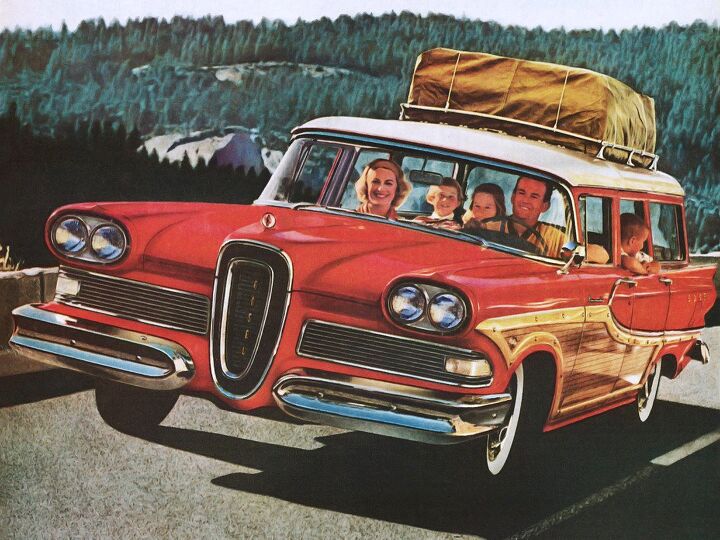






















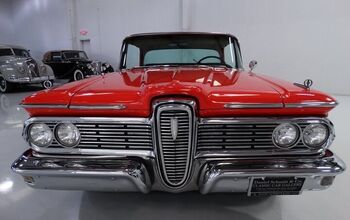
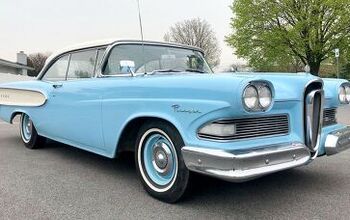

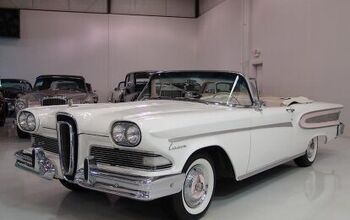




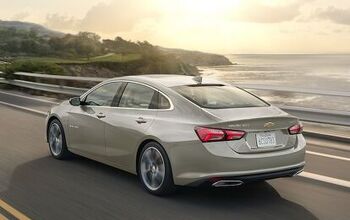





Comments
Join the conversation
Obviously the Edsel was not needed especially the Edsel wagons. The Edsel was the wrong car at the wrong time especially the 1958 which had the ugliest most polarizing design. By 1959 the Edsel was toned down but it was too late.
At least one place where the industry has gotten better, today there'd just a a Bermuda, a Bermuda LX and a Bermuda SE.